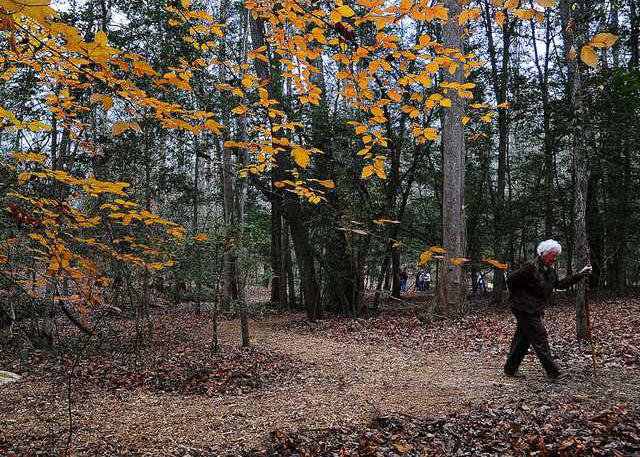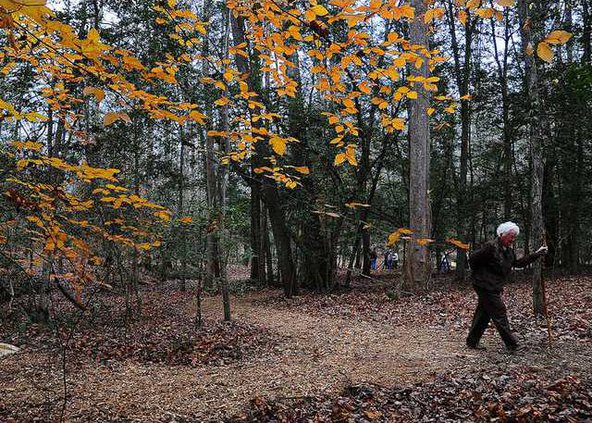DAHLONEGA — Along a winding path in the forest at Glisson Camp & Retreat Center, the changing leaves took a symbolic tone as the EcoEternity Forest was consecrated Monday afternoon.
EcoEternity Forest offers families an alternative to traditional burials or cremations. After cremation, ashes typically stay in an urn or are scattered at a favorite place.
At EcoEternity Forest, the remains are placed in a biodegradable urn and buried under a tree. The tree then becomes a living memorial.
“Every now and then you need to go to a place and remember your loved one and so we came up with this idea of the EcoEternity Forest. Basically it’s a natural forest and we select trees that will live for at least another 100 years,” said Axel Baudach, co-founder of EcoEternity LLC.
It’s this longevity that made Glisson the ideal setting for the forest. The camp is in its 87th year and has seen four to five generations of campers.
“It began to become very clear that in a society as transient as our society is that there are very few places that people can truly call home. This winds up being one of those places for many of the people who camp here. And so it began to make a lot of sense to have them a final resting place here as well,” said Russell Davis, Glisson director.
Families can select a base tree or an individual can choose to be interred under a community tree. Fifteen people can be buried under one tree. Families also have the ability to decide how to define family — that definition can include pets.
A single space at a community tree costs about $800. A base tree will cost a family around $4,500; split between 15 people it costs about $300 each.
“It’s really an idea that goes across all kinds of people. So it’s not just for the rich or the naturalist,” Baudach said.
The concept is different from other “green” cemeteries because rather than burying the entire body under a tree the remains must be cremated and placed in a bio-degradable urn that is then buried under the selected tree. The ashes, in turn, provide nutrients for the tree.
Every effort is taken to prevent the destruction of the tree’s root system. The trees are inventoried, tagged and the GPS coordinates are recorded.
“The idea is that the forest remains natural. It’s not a park,” Baudach said.
The concept began in Switzerland in 1993. In 2000, Baudach took the concept to his hometown in Germany. The idea became very popular and has changed the burial culture in Germany. Baudach said 80 percent of Germans are cremated and one third of those are interred under a tree.
Baudach said he thinks the concept will catch on in the U.S. as well.

